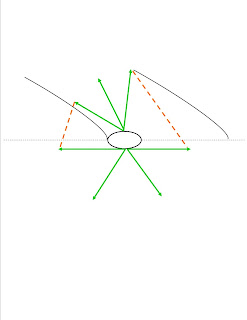On vaccines and masks:
A great flood happened.
A man was forced to climb to the second floor. He was
looking out the window and a canoe passed. “Do you need help?” The
people in the canoe called to the man. “Oh no, God will provide.” So the canoe went on it’s way.
The water kept on rising and the man was forced to go onto his roof. He
was sitting there looking around when a helicopter flew close by and a
man inside called, “Hey! Need a lift?”, and the man said, “Oh no, God
will provide!”
The water rose even higher and the man
drowned. He went up to heaven, met God and said, “I trusted you!
You were supposed to provide!” And god said, “I sent you a canoe, and a helicopter!”
---
He
gave us a brain, the brain gave us reason, science that
explains the reasons for good hygiene, and vaccines. We should probably be gracious
for the gift of reason and use it. (From me, a complete atheist.)
Times
are changing and the bubble is opening. We are all thankful for the vaccine and natural immunities that have made this possible. But there is now a new virus in
the world, it isn't going away, and we aren't going back to the good
old days. In fact, the good old days were full of seasonal colds, the flu, polio, and lots of things that took children before they were adults, adults before they live a full life, and ruined our quality of life. They weren't really that good, and in fact, it seems we were just enjoying one of those idyllic interludes between periodic plagues, ice ages, and world wars.
Better to work our way through change, which is never easy.
The pre-911 world is not coming back, but we have gotten used to it and hardly notice the differences unless we dwell futilly on the past,
and some ways it is probably better.
Adapt. Immune compromised people will need to remain vigilant and they will have to take more precautions; annual vaccines and mask wear in many settings. Healthy people will need to be courteous to others and take a few precautions that seem unnecessary to them. In the future there will be no "cover your mouth when you sneeze" or "cough into your elbow." If you have a cold or even allergies, politeness and good hygiene will demand you wear a mask, and not to wear a mask when you have the sneezes will be fundamentally rude. If you think about it, it has ALWAYS been rude and inconsiderate to spread your germs and make other people sick, but we all did it anyway. Now we have better tools not to.
It no longer feels "weird" to wear a mask in the grocery store or office, so I hope we will when we should. It won't be all the time, but will be when we are sick or when some new surge comes along. It may be smart in an airport terminal, and on the same day superfluous in a quiet restaurant. We need to be thoughtful, and determine the difference, not based on politics or local fashion or the fashion of the moment, but based on the situation.
It comes back to reason. I'm looking forward to wearing a mask only as needed, and at the same time, if I can be smart about it, avoiding seasonal colds and all the rest. That would be nice.














